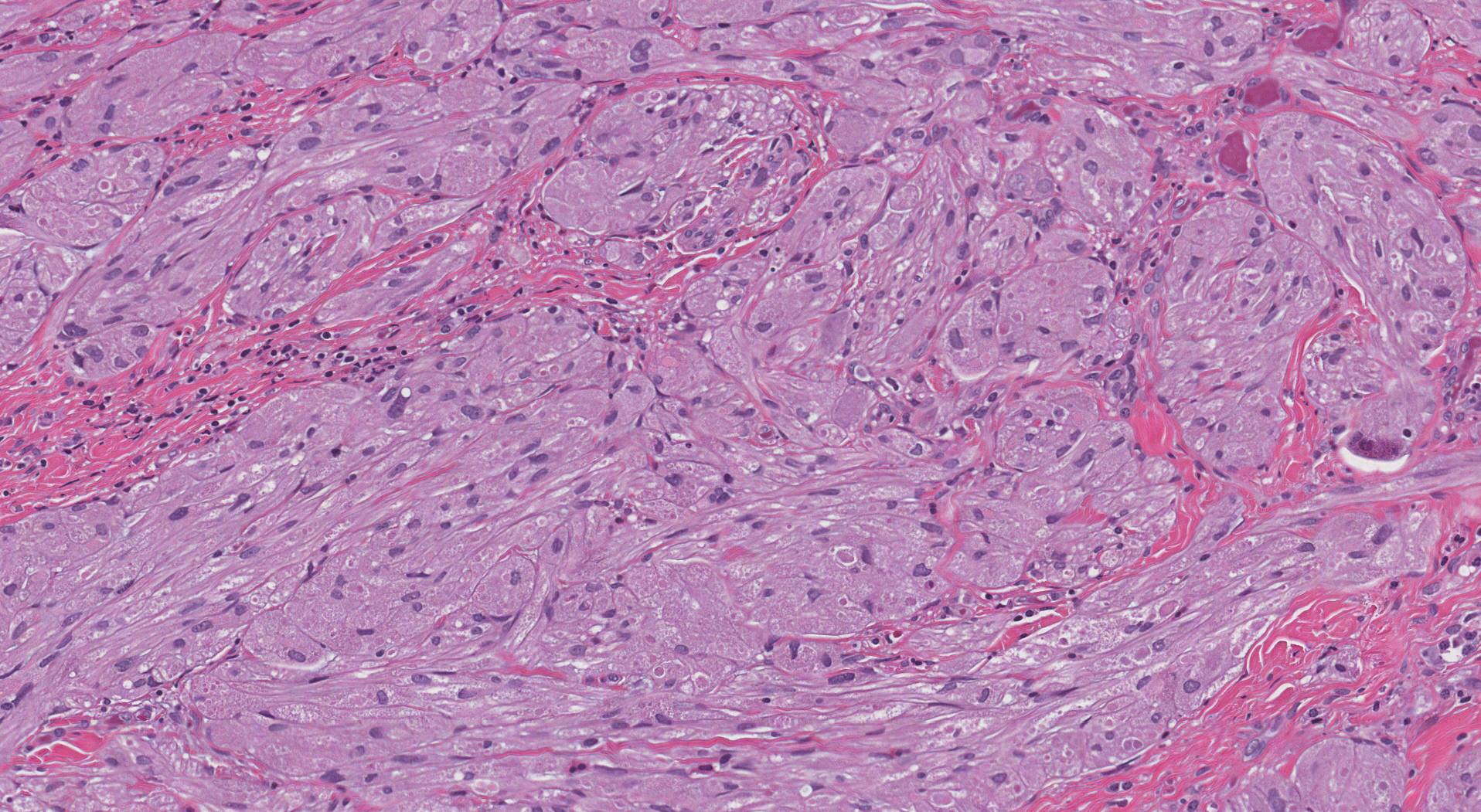by Jason Wasserman MD PhD FRCPC
April 26, 2023
What is a ganglioneuroma?
Ganglioneuroma is a rare type of non-cancerous tumour made up of cells normally found in the nervous system including ganglion cells, nerve fibers, and Schwann cells.
What causes ganglioneuroma?
Most people who develop a ganglioneuroma have no known risk factors and the cause remains unknown. People with the genetic syndrome multiple endocrine neoplasia type 2B (MEN2B) are at high risk for developing multiple ganglioneuromas also known as ganglioneuromatosis. In patients with MEN2B, ganglioneuromas are caused by a genetic alteration involving the RET gene.
What are the symptoms of ganglioneuroma?
Most ganglioneuromas do not cause any symptoms and are discovered incidentally when imaging or other investigations are performed. Patients with multiple ganglioneuromas involving the gastrointestinal tract (ganglioneuromatosis) may experience symptoms such as abdominal pain, constipation, and bloating.
Can ganglioneuroma turn into cancer?
No. Ganglioneuromas are benign (non-cancerous) tumours that will not change into cancer over time.
Where in the body are ganglioneuromas normally found?
Common locations for ganglioneuroma include the gastrointestinal tract (in particular the colon and small intestine), adrenal gland, and thorax.
How is ganglioneuroma diagnosed?
The diagnosis can only be made after tissue is examined under the microscope by a pathologist. The tissue is usually removed in a procedure called a biopsy or excision.
What does a ganglioneuroma look like when examined under a microscope?
When examined under the microscope, ganglioneuroma is made up of long, thin Schwann cells arranged in sheets or structures called fascicles. A smaller number of large, round cells called ganglion cells are also usually seen scattered among the Schwann cells. Nerves or nerve fibers may also be seen running through the tumour. Mitotic figures (cells dividing to create new cells) are not usually seen. In the gastrointestinal tract (for example the colon or small intestine), the tumour may be described as polyploid because it sticks out from the inside surface of the organ like a polyp.


